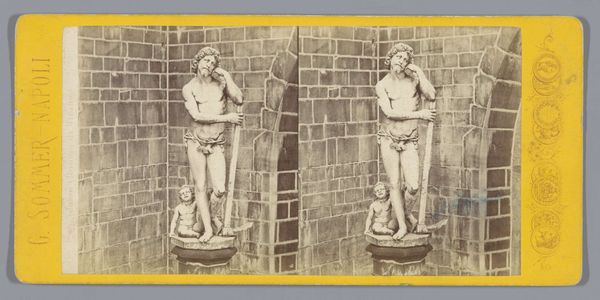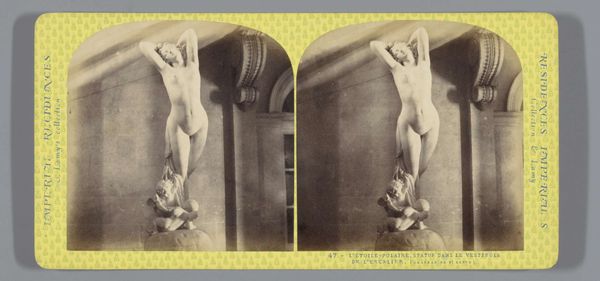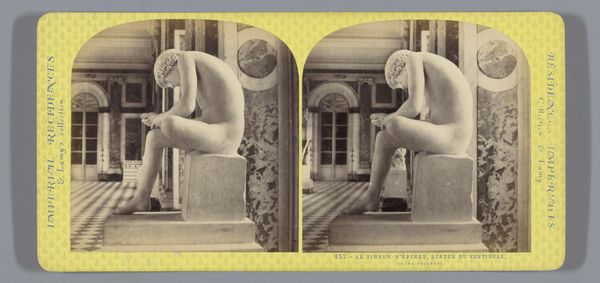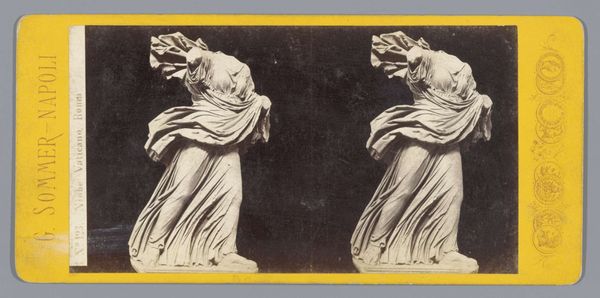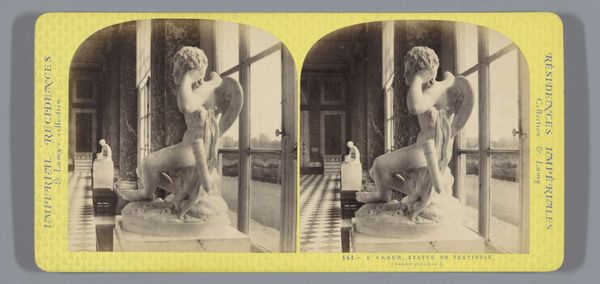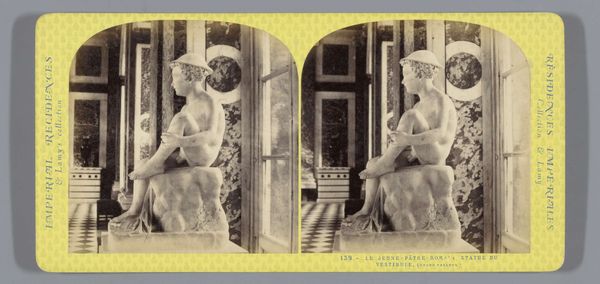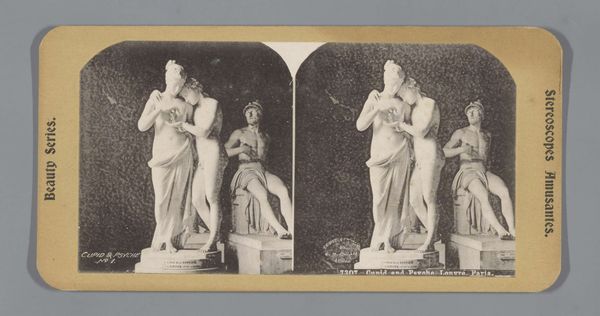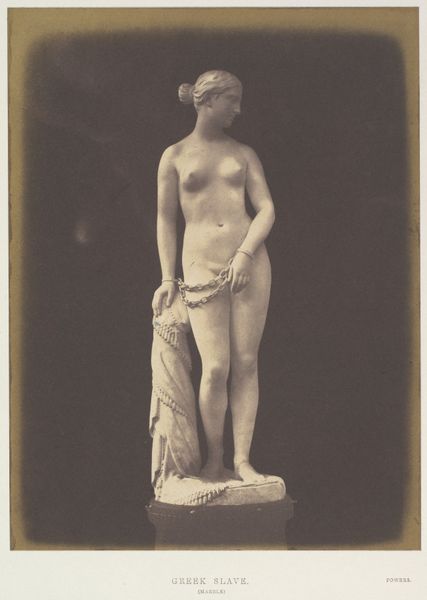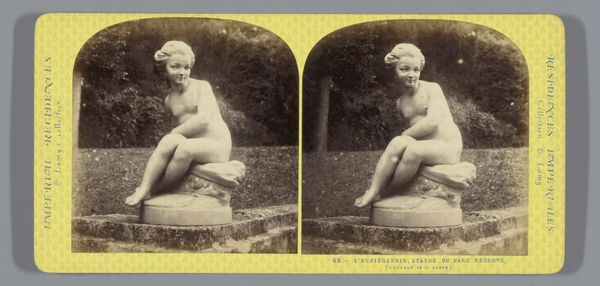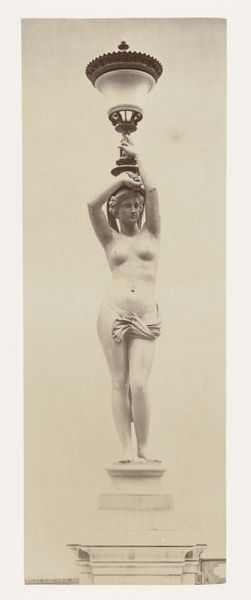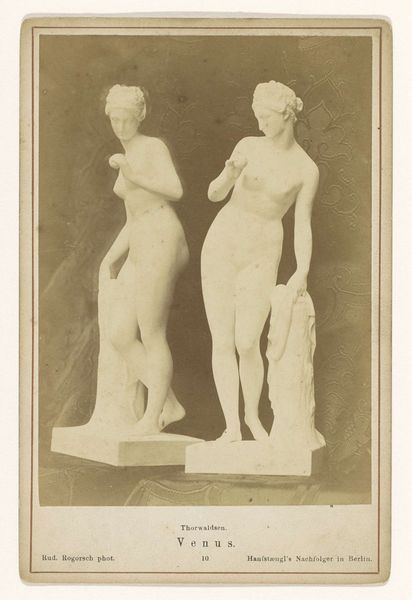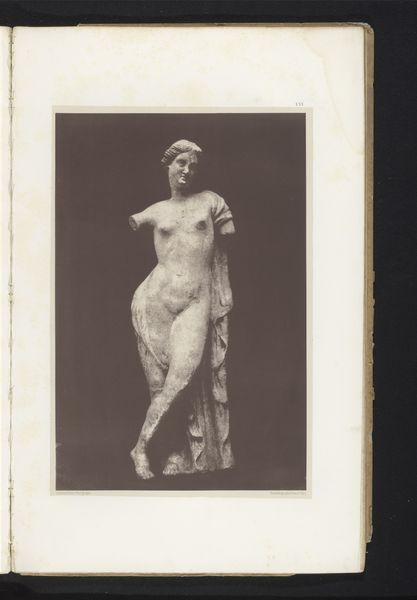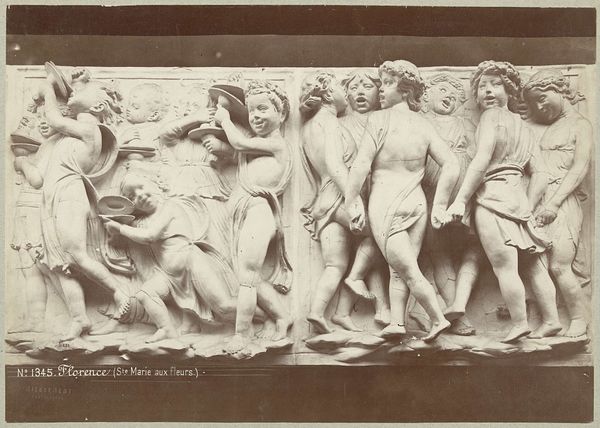
photography, sculpture, gelatin-silver-print
#
portrait
#
classical-realism
#
photography
#
sculpture
#
gelatin-silver-print
#
academic-art
#
nude
Dimensions: height 84 mm, width 177 mm
Copyright: Rijks Museum: Open Domain
Curator: This is a photograph by Giorgio Sommer, taken sometime between 1860 and 1880. The gelatin-silver print captures a sculpture of Adam situated within the Milan Cathedral, now held at the Rijksmuseum. Editor: My immediate response is the stark contrast. The stark whiteness of the marble Adam sculpture against the somber backdrop of the brick evokes feelings of innocence against societal pressure. Curator: The nude figure of Adam is strategically positioned; his pose suggests classical idealism, while also pointing to vulnerability. There is a visual history being presented about beauty, and the construction of maleness, rooted in both mythology and religious doctrine. Editor: Yes, I see that tension. We see the beginnings of art-historical canon, but presented through the limited lens of the male gaze. Who sculpted it? The perspective locks onto a figure that celebrates conventional attractiveness while normalizing notions that prioritize cisgender, male-centered identities. The historical moment really amplifies these societal values. Curator: In the language of religious iconography, the placement of the sculpted Adam is far from neutral; its placement in a space intended for veneration creates associations with redemption and fall from grace. And from the photographic viewpoint, Sommer’s staging directs attention to the theological role that shaped how this image gets reproduced, even to the present. Editor: It does spark crucial discussions about public sculpture’s place in civic spaces, and which bodies were valorized—or suppressed. How much did these images determine future generations’ ability to self-represent in visual culture? These visual dialogues also invite questions regarding patriarchy and representation. Curator: What I appreciate in these historical photographs, from the perspective of cultural memory, is how the act of circulating the sculpted image influences aesthetic concepts. Adam becomes less a religious figure, more a recognizable symbol traveling across time periods, subject to a diversity of meanings. Editor: Precisely. Sommer's piece serves not just as a mirror reflecting past aesthetics but also as a catalyst for questioning our contemporary moment's ethical stance concerning representations and public dialogues. This reexamination, for me, makes the photo deeply resonant and surprisingly relevant.
Comments
No comments
Be the first to comment and join the conversation on the ultimate creative platform.
